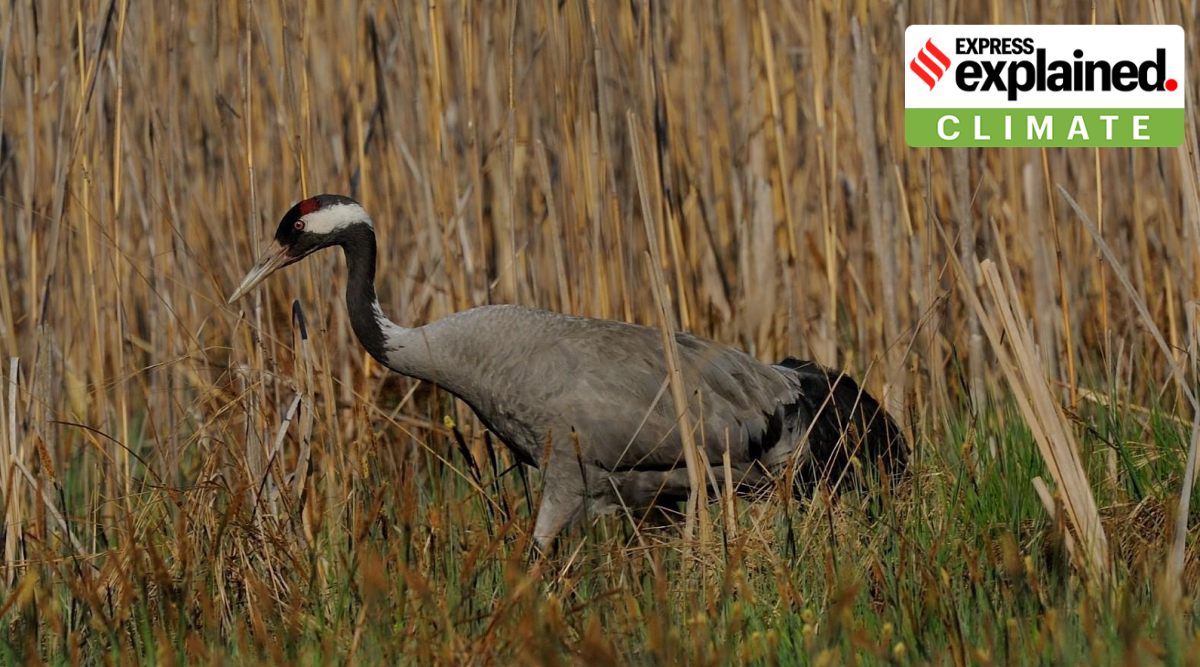Explained: Why the return of a bird to Ireland after 300 years matters

More than three centuries after it disappeared from Ireland, the common crane, a bird that is part of its folklore and was a popular pet during medieval times, has returned to the island nation, reports in the BBC and The Irish Times said.
A pair of cranes was spotted last year on a restored peat bog –a type of wetland that is mostly found in northern latitude countries. The birds are in Ireland’s Midlands region, but their exact location has been kept secret to protect them, the reports said.
What do we know about the cranes?
The common crane is typically seen in Ireland during the winter, but is not sighted during the breeding season. Last year was the first time in over 300 years that they were spotted nesting in Ireland during this period.
Cranes stand at 4 feet tall with a wingspan of over 7 feet, and used to be the largest birds in Ireland. They are connected with the history and culture of the country, featuring in folklore tales and in the names of towns. Although they were once common, the destruction of their habitat saw them disappear around the 16th and 17th century.
According to Mark McCorry, an ecologist who spoke to the BBC, the birds did not produce eggs last year– which is not unusual for cranes, who take a couple of years to become successful breeders. The expert said he was “reasonably optimistic” that the birds would go on to breed.
It is also being suggested that the common crane is reestablishing its presence in Ireland, given another the spotting of a young crane in County Dublin last year.
The cranes were spotted on land belonging to Bord na Móna, a semi-state company known for extracting peat fuel from bogs in the region, but which ceased its harvesting operations in January this year to shift towards renewable energy and rehabilitating wetland bodies. It was the company that confirmed the sighting.
Why is bog restoration important?
Bogs (also called quagmires) are soft, spongy wetlands that accumulate peat– a fossil fuel that is used for heating homes and businesses in northern Europe. They are formed in northern climates, and take thousands of years to develop.
Bogs also act as carbon sinks, sequestering around 200 million tons of carbon from the environment in Siberia and Scandinavia. For centuries, however, they have been drained for extracting peat or for development, leading to the destruction of their delicate ecosystems, including damage to species such as cranes that breed here.
Efforts are now underway around the world to restore these wetlands by rewetting them and reintroducing bog plants. If bogs in Ireland recover, experts say, there is a chance that cranes too would re-colonise them.

“평생 사상가. 웹 광신자. 좀비 중독자. 커뮤니케이터. 창조자. 프리랜서 여행 애호가.”
